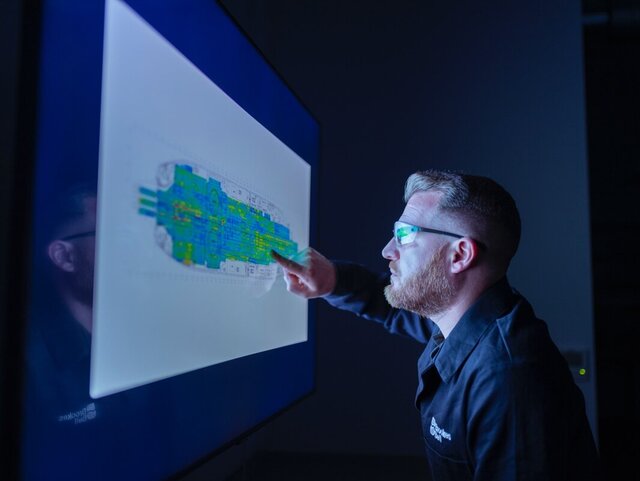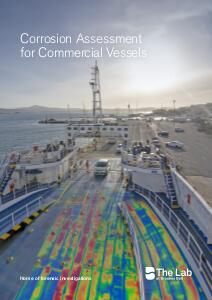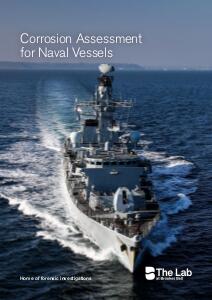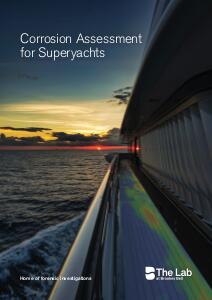Corrosion costs time and it costs money. In fact, the collective global cost of corrosion to shipowners has been estimated between $50bn and $80bn according to The Association for Materials Protection and Performance (AMPP).
For vessel owners and operators and those involved in the management or maintenance of all marine vessels, corrosion presents a number of significant challenges, from compromised structural integrity and the consequential safety issues to the need for expensive repairs.
However, there’s an innovative new solution that will:
- Identify carbon steel corrosion across all areas of a vessel – not just spot checks.
- Allow this corrosion data to be interpreted and understood in a visual format derived from a digital twin: a virtual representation of the vessel’s steel structure enabling real-time monitoring and analysis.
- From there, a comprehensive understanding of the corrosion issues affecting the vessel can be attained, helping to identify critical areas requiring immediate attention and forecasting repair costs, prior to the vessel entering dry dock.
What is The Lab’s CMAP service?
Our innovative CMAP service consists of a highly refined Pulsed Eddy Current Array (PECA) inspection technique, the results of which are modelled using The Lab at Brookes Bell’s 3D data visualisation software before being married to a visual dashboard that creates a CMAP global overview report highlighting the condition of a vessel’s steel, the remaining wall thickness and therefore the material loss.
What are the benefits of The Lab’s CMAP service?
The CMAP survey provides detailed information on the remaining steel plate thickness and the extent of corrosion present on the vessel which allows for an accurate quote for works prior to or during a repair, refit or rebuild, with minimum disruption to the commercial vessel’s operations.
- For vessels classed with Lloyd’s Register, our CMAP service is accepted by Lloyd’s Register inspectors as a factual indication of the material state of the vessel’s steel structure allowing for more targeted repair or refit schedules – resulting in significant cost and time savings.
- The inspection can be carried out some months in advance of a docking period to suit the vessel movements.
- Allows the management company, shipyards and other stakeholders to understand the scope of work and to more accurately prepare and align schedules, budgets and for subcontractors to be briefed well in advance.
- Accurately understand the required repairs including common wet areas and coating areas that need repairing or replacing helping to avoid wasting time and resources.
- Gain a benchmark understanding of the material state of the vessel allowing accurate decision making regarding the vessel’s remaining service time before repair / refit and overall life expectancy.
By providing a deeper level of understandable data, provided in a truly legible format, The Lab’s CMAP service allows commercial vessel owners and operators to make better, quicker, more informed decisions that result in tangible cost, time and resource savings.
How does The Lab’s CMAP service work?
Our PECA technology is arguably the most thorough corrosion mapping and detection solution on the market due to its ability to assess through myriad surfaces and thick coatings or coverings, such as:
- SynDeck, Camrex and hull fairing compounds.
- Wooden or composite coverings such as Bolidt-deck.
- Ceramics tiles, carpet, underlays and lagging.
- Antifouling and other cementitious screed and paint coatings.
An accredited service
The Lab’s CMAP service has been put through its paces, analysing corrosion on vessels that have spent time in some of the world’s most testing, brutal environments.
Based on that development background, and its proven credentials, The Lab’s CMAP service has received full validation of the PECA method from Lloyd’s Register and is endorsed for the utilisation of PECA and CMAP on both naval vessels and the entire commercial and merchant fleets.
To find out how The Lab at Brookes Bell’s Full Corrosion Assessment can help you contact us now





